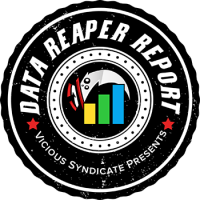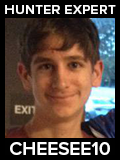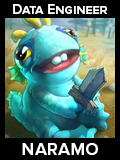
Welcome to the 163rd edition of the Data Reaper Report! This is the first report following the third set of balance changes in Ashes of Outland.
Our Data Reaper Project has 2,900 (HDT) active contributors and we thank them wholeheartedly. Contributing to the Data Reaper project through Hearthstone Deck Tracker or Firestone allows us to perform our analyses and to issue the weekly reports. Without the community’s contributions, there would be no project. Contributing data is very easy, so if you enjoy our content and would like to make sure it remains consistent and free – Sign up!
Update: Listen to our first Data Reaper Podcast released on Saturday, May 30, 2020.
Quick Links
Class/Archetype Distribution | Class Frequency | Matchup Winrates | vS Power Rankings | vS Meta Score | Class Analysis & Decklists | Meta Breaker of the Week | How to Contribute | Credits
Number of Games
| Overall | 140.000 |
| Legend | 50,000 |
| Diamond 4 to 1 | 30,000 |
| Diamond 10 to 5 | 27,000 |
| Platinum | 14,000 |
| Bronze/Silver/Gold | 19,000 |
Class/Archetype Distribution
[TABS_PRO id=39140]
Class Frequency
[TABS_PRO id=39141]
Class Frequency Discussion
Balance changes can not only alter the power level of classes but they also often have a large psychological impact on the player base. With Warrior, Rogue, and Demon Hunter nerfed, players looked for an alternative and found it in Highlander Hunter. Hunter was also nerfed with the change to Scavenger’s Ingenuity, but this mostly impacted faster Hunter decks that were running it alongside Stonetusk Boar, and they subsequently declined in play. In contrast, Highlander Hunter has more than doubled its play rate at some rank brackets, and is now one of the most popular decks in the format.
Meanwhile, Aggro Demon Hunter has drastically declined in play after being hit with nerfs for the third time in less than two months. Funnily, it’s still the most popular deck at legend, so it doesn’t appear to be struggling to deal with the balance changes. After the nerf to Priestess of Fury, non-Priestess builds have taken over the archetype. There is some divergence in builds regarding Crimson Sigil Runner and its possible replacements, but the archetype is fairly clean.
Rogue is in a somewhat chaotic state. The secret variant in Galakrond Rogue is still the most popular one, but we’re seeing the stealth variant starting to gain traction after going through some heavy experimentation. Highlander Rogue is also attempting to adjust to the nerfs to Hanar and Stunner, and some non-secrets builds have appeared.
Priest’s popularity has not changed much after the balance changes, though we do see an increase in Highlander Priests. Galakrond Priest’s build is very clean and refined, and there isn’t much experimentation there following the patch.
Enrage Warrior has fallen hard in its play rate. Its popularity has dropped by over 50% at legend in response to the nerfs. This reaction seems very excessive since we did not expect that the balance changes would hurt the deck that much, and it did not change at all in its card choices after the patch. The archetype is quite evenly split between Eggs and non-Eggs variants.
In addition, we see two Warrior archetype beginning to rise in popularity. The first is Control Warrior running the Bomb package (Wrenchcalibur/Blastmaster). We intentionally do not call this archetype “Bomb Warrior” because we want to make a clear distinction between Control Warrior shells that run Wrenchcalibur, and a percentage of Enrage Warriors that opt to run Wrenchcalibur over Livewire Lance.
The second archetype that’s emerging in small numbers is Pirate Warrior. The archetype is currently running a lot of direct damage (Heroic Strike/Mortal Strike) and Imprisoned Gan’arg.
Mage is another class that did not get nerfed, so its popularity has risen. Highlander Mage is all you can seriously talk about when evaluating the class, and its build has long been established.
Druid appears to be making a comeback to the meta, backed up by the Spell Druid archetype centered on Fungal Fortunes and Glowfly Swarm. Spell Druid is currently split between two variants that have significant overlap between them (splitting them is highly problematic because of their passive, ramping early game which means they can be difficult to distinguish before they reach their late game). The first variant is the pre-patch Glowfly Swarm/Mountseller build that runs Savage Roar. The second is a new variant that utilizes Breath of Dreams alongside late game dragons such as Alexstrasza and Malygos.
Warlock completely flipped on its head. The devastating nerf to Imprisoned Scrap Imp has reduced Zoo Warlock into a very fringe presence and Control Warlock is also fairly unpopular. Meanwhile, Quest Warlock has exploded and is now the primary archetype of the class. The deck is still developing and attracting praise from many top-level players following the balance changes.
Paladin is also attempting to make a comeback to the meta. Pure Paladin has become quite noticeable throughout ladder, boosted by nerfs to top meta decks as well as a buff to Aldor Attendant. Murloc Paladin can also be observed, with Control Paladin staying as the third most popular Paladin archetype.
Shaman has not attracted much enthusiasm. Highlander Shaman is still seeing the most play, as players are desperate to accompany the class’ buffed removal toolkit with some kind of finishers that can actually win Hearthstone games.
[TABS_PRO id=39142]

[TABS_PRO id=39143]
vS Meta Score
[TABS_PRO id=39144]
vS Power Rankings Discussion
Before we get to the Power Rankings, which might look a little discouraging on the surface, we want to make something perfectly clear: nothing about this meta is solved. In fact, as you continue to read this report, you will encounter dramatic discoveries that will likely completely change the current meta. The top-performing decks in the game today are at the top because they didn’t need to make any discoveries. They didn’t need to adjust. Their builds are clean, fairly obvious, and efficient. But, they also don’t have much scope for improvement. When other decks figure out what they need to be doing and catch up, the power levels could shift. This table could look drastically different in just a couple of weeks.
So let’s start with Aggro Demon Hunter. It got nerfed three times and yet it sits at the top of the table at every level. Once again, its matchup spread is nearly green across the board, and only Enrage Warrior provides the dark red square (and this matchup is even more difficult for DH now that Priestess got nerfed). While Demon Hunter was nerfed, the decline in Warrior helped establish an early meta that was extremely favorable to the class. Other classes trying to ‘find their feet’ has also helped, in addition to another highly successful deck that falls prey to Demon Hunter (Highlander Hunter).
Highlander Hunter started this meta very strong. It’s another deck with a matchup spread that’s green across the board, save for just one red square (Aggro Demon Hunter). This bad matchup means that it’s unlikely to surpass Aggro Demon Hunter, but it will likely remain a powerful deck. However, there’s not much room to improve when it comes to Highlander Hunter. Could other decks improve their performance against it with clever refinement? Absolutely.
Faster Hunters look worse at the moment. We think Dragon Hunter is still a very strong and consistent ladder deck that can adjust to the hit on its Stonetusk Boars, but Face Hunter doesn’t have the same luxury.
Highlander Mage looks impressive. Now that Aggro Demon Hunter got nerfed again, the matchup is a little closer. Highlander Mage performs very well against most decks in the meta besides Hunter decks, and the Highlander Hunter matchup is the best of the three. Once again, we have a deck that didn’t change after the balance changes and enjoys a more favorable field for the moment.
The decline in Warriors is a knee jerk reaction. Sure, Enrage Warrior doesn’t look unstoppable anymore. There are a few non-Priest matchups where it even looks vulnerable (Mage, Druid). However, its ability to completely destroy Aggro Demon Hunter as well as its impressive skill ceiling and adaptability means it will likely remain a prominent meta contender.
But this isn’t all we can say about Warrior. There are two additional Warrior decks that currently perform at an elite level, and are not shown in the Power Rankings because of their low play rate. Pirate Warrior looks like a very powerful aggressive deck, and one of the best choices to quickly climb ladder these days because no opponent on ladder sees it coming. Bomb Control Warrior’s potential is meta breaking and it’s currently on the brink of blowing up. It performs well against many of the common meta decks (including a favored matchup against Demon Hunter), with its only clear weakness being the Priest matchup. But what would you say if we told you there’s a way to dramatically alleviate the Priest problem? Is it just game over? Do we just blow the meta sky-high?
If you think no other class is aspiring to be a Tier 1 contender, think again. Druid is looking like the real deal, and we wouldn’t be surprised to see Spell Druid climb to that level. Its refinement phase has been very interesting to follow, and we think both of its variants carry great strengths in the current meta. The Roar variant is cleaner and stronger now, but the Dragon variant could be the one to watch out for in the near future.
And then there’s Galakrond Rogue, which looks quite lukewarm at the moment. The secret variant has certainly dropped in its power, but the less popular and unrefined stealth variant could provide a breakthrough. We’re not sure about Rogue having Tier 1 potential, but there’s a lot to explore when it comes to Greyheart Sage.
Quest Warlock’s development has also been very interesting and we would have been higher on the deck if not for Wrenchcalibur’s imminent grand entrance to the meta. Quest Warlock doesn’t have truly terrible matchups, except for Bomb Control Warrior, which is something like an 80-20 matchup. If Control Warrior rises in popularity as much as we think it will, Warlock will run into a serious problem.
Priest is sitting where it did before the balance changes. There are just too many matchups it struggles against. Galakrond Priest’s build is very solidified, with not much room for improvement, so the deck can’t really get better through internal means. The meta could become more favorable for the class if Warrior and Druid grow in popularity, but even in this case, we struggle to envision scenarios where it becomes truly powerful and consistent.
Paladin is actually not that far away from being competitive as a result of the balance changes, but it probably still falls short of having a real deck. Pure Paladin just doesn’t match up well against the late game prowess exhibited in other classes, such as Rogue and Mage. Murloc Paladin crumbles against the same opponents it did before: Demon Hunter, Warrior and Rogue just don’t allow it to develop its board.
Shaman has stayed in the dumpster. There’s nothing within the class that looks remotely viable or competitive, and the buffs it has received have done nothing to address the class’ serious flaws. Highlander Shaman is Tier 5 on a good day. That’s all she wrote.
Class Analysis & Decklists
Demon Hunter | Druid | Hunter | Mage | Paladin | Priest | Rogue | Shaman | Warlock | Warrior
Highlander Hunter has enjoyed a good first week of the post-patch meta. The initial reaction to Warrior, Demon Hunter and Rogue being nerfed is to jump to the next best thing, which was Hunter. Highlander Hunter wasn’t heavily affected by the nerf to Scavenger’s Ingenuity (as it is mostly used to tutor Zixor, which is still very powerful), and its play rate quickly skyrocketed to the top of the charts.
Highlander Hunter has also directly benefitted from the lower play rates (and slightly lower power) of Warrior and Demon Hunter, so its win rate puts it at a comfortable Tier 1 slot.
The archetype did not need a lot of fine-tuning. The build we’ve featured before the patch works wonders, though we’ve adopted one change made by others that we’ve identified as an upgrade: replacing Kill Command with Scalerider. Running Phase Stalker and two secrets is a sidegrade option. Nagrand Slam is often cut from lists, but the card is still fine. It is particularly powerful in slower matchups, but isn’t a liability in most other matchups with the exception of Demon Hunter and Hunter mirrors. If you’re running into a very fast meta, you can replace it with Kill Command.
Dragon Hunter seems a little weaker than Highlander Hunter, but it does have room to grow. Most players utilize the pre-patch builds running Stonetusk Boar. But with the nerf to Ingenuity, we’ve identified what is likely to be the stronger post-patch utilization of the card: Zixor. The featured build cuts Boars and Kill Commands and plays a slightly slower game, which seems to be working out well for the archetype in the current meta.
Face Hunter has been hit hardest by the Scavenger’s Ingenuity nerf. The archetype really needed those big Stonetusk Boars to win games, and Zixor isn’t a viable alternative since it’s too slow for the deck to effectively utilize. Augmented Porcupine builds are still a waste of time, so Face Hunter could end up bowing out from the current meta. Its performance on ladder isn’t terrible, but it’s hard to justify playing it over the other two Hunter decks.
Aggro Demon Hunter has now been nerfed three times and yet the deck remains one of the stronger performers on ladder. It helps that Enrage Warrior, which remains its only counter, was also nerfed and subsequently dropped in its play rate. Until Warrior surges back in popularity, Aggro Demon Hunter is enjoying an extremely favorable meta which makes up for the small drop in its power.
If there was a debate on whether Priestess of Fury was a strong card in the archetype, we’ve received an answer in the 7-drop being nerfed. With only 5 health, Priestess is now far too easy to remove, and the non-Priestess build is the way to go.
When it comes to the post-patch build, one interesting question is whether we should continue playing Crimson Sigil Runner or replace it with another card. While Sigil Runner is clearly weaker now, it still seems good enough to include and the deck continues to perform very well with it. Other alternatives we’ve identified as good options if you want to replace Runners: Sightless Watcher is a solid 2-drop that improves your consistency. Vulpera Scoundrel is a strong value card in Demon Hunter because its spell pool is of high quality, and it often gives you extra damage to finish games. It’s not an ideal turn 3 play though.
Rogue has been struggling to perform at a high level after the balance changes, as players seem unsure on how to best utilize the class after the nerfs to Shadowjewler Hanar and Blackjack Stunner.
While Hanar and Stunner are still good cards, the secret build of Galakrond Rogue has certainly suffered a drop in its power level. It’s still competitively viable, but the archetype’s matchup spread into other top meta decks doesn’t look very promising. In the current meta, we recommend running Eviscerates, with the option to switch back into Faceless Corruptors should Warriors make their return.
However, Galakrond Rogue has another avenue to venture towards, and it’s looking very promising after the patch: the Stealth variant is outperforming the Secret variant despite being at very early stages of its refinement. The Standard build cleans up some of the ladder builds we’ve evaluated. Both Faceless Corruptors and Shadowsteps are better in the stealth variant than they are in the secret variant, and it’s possible to run one Devoted Maniac due to the extra draw from Greyheart Sage and Skyvateer.
But there’s more to Stealth Galakrond Rogue than meets the eye. We’re particularly intrigued by the potential of Greyheart Sage. Its performance suggests that it could be one of the most powerful draw engines in the format alongside Shadowstep. Yet, it’s “starved” of stealth minions in the standard build, making it far less consistent than we would like. The deck is just extremely desperate to draw Sage alongside a stealth minion in the early game, and this scenario leads to a dramatically better chance at winning the game than any other combination of cards (other than Edwin cheese, perhaps).
So based on our findings, we’ve theorycrafted another list, which we call the “turbo” build. This list runs seven stealth minions, including Worgen Infiltrator and Akama, while maxing out our invokes. The necessary cuts are minions that are currently considered core to the deck: Pharaoh Cat and EVIL Miscreant. Both of these cards compete for mulligan priority with Greyheart Sage, and they also possess some anti-synergy with Sage since they fill your hand (making it more difficult for you to execute Sage/Shadowstep at later stages of the game).
The thinking behind the turbo build is the following. Look for Greyheart Sage more aggressively in your mulligan (especially in slower matchups) and activate it on turn 3, or turn 4 alongside Shadowstep. The resource advantage should allow you to more consistently invoke your Galakrond, find it and win the game. Faceless Corruptors are better with additional stealth minions, and Akama Prime might not be a liability to draw later. With this kind of draw consistency, even running Togwaggle’s Scheme doesn’t sound like a crazy idea (and it sounds even better with Bomb Warrior about to blow up). But, if you ever decide to run Scheme, you should not consider keeping it in your opening hand unless you’re facing Priest! This is a mistake many players are making with Scheme, which drags its performance down.
As always with theorycrafts based on data, the turbo build could end up not working out, but we think it’s worth exploring and then possibly adjusting after receiving data on it. If Sage is truly held back by the lack of activators to the point it’s worth investing into, by cutting other good cards, Stealth Galakrond Rogue has meta breaking potential.
Highlander Rogue doesn’t exhibit the same level of promise. It was also hit with the nerfs to Hanar and Stunner, and it doesn’t have as much room to adjust as Galakrond Rogue. We’ve seen some builds cut the secret package in order to run more defensive cards, and this approach can certainly help you survive against Demon Hunters and Hunters. However, Highlander Rogue’s ceiling seems far lower than Galakrond Rogue’s regardless of its build and we don’t expect it to be a prominent meta contender.
With many other top meta decks nerfed, some players expected that Priest’s standing in the meta would improve. This didn’t really happen, and Galakrond Priest is still poorly positioned in the meta. Specifically, it suffers from a horrible matchup against Highlander Hunter (currently one of the most popular decks in the format) and it also struggles against the rising Quest Warlock. Despite being nerfed, Rogue is still favored against Priest and we expect the gap in this matchup to widen since Rogue is in an unrefined state at the moment while Priest has no real room to grow (its optimal build is well established).
Galakrond Priest will be hoping that two other promising classes gain traction: Warrior and Druid. Galakrond Priest still performs very well against Enrage Warrior, though the extent of its favorability comes into question when Warrior players actually build their decks well for the matchup (not running Eggs, and running double Kor’kron/Greenskin). Either way, it’s hard for us to envision Galakrond Priest being in a dominant position in the meta.
The option is there to go for the Highlander Priest route. The archetype has fallen off pretty hard in its win rate due to an injection of jank in its post-patch builds (players really like fooling around with some bad cards in this deck). The featured build still performs as well as the archetype can, but it’s not particularly great either.
The balance changes have had a psychological impact on players, and Warrior’s play rate has drastically dropped after the patch. However, Enrage Warrior is still one of the best decks in the game.
Nothing has changed when it comes to Enrage Warrior’s optimal build, which is Meati’s Greenskin/Deathwing variant. This build gives you the best win rate against Priest, which is your most difficult matchup (It is about 10% stronger against Priest than the Egg build).
This week, there was a Priest vs. Warrior best of 11 showmatch, featuring two the top Enrage Warrior players (Meati/Gaby) against two of the top Galakrond Priest players (Zanan and TicTac). The outcome was 8-3 in favor of the Warrior! While the sample size is small, it does suggest that the matchup isn’t hopeless when the Warrior is built well and executes its game plan well. We’ve already said before that, based on data, Enrage Warrior’s skill ceiling is extremely and uniquely high.
But, Warrior isn’t just about one deck in the post-patch meta. There are promising signs that the class has other very strong archetypes! Control Warrior running a small Bomb package has been performing extremely well, and exhibits meta breaking potential.
One issue with Bomb Control Warrior is its performance against Priests. Its matchup spread is extremely good except for the Priest matchup, which is utterly horrible. However, the code might have been cracked on how to drastically improve the Priest matchup and making it just slightly unfavored while not hurting our performance against aggressive decks. In the featured build, we take a page out of Enrage Warrior’s book and add Greenskin and Grommash to provide the missing damage and finishing potential the deck is missing. Based on very preliminary data, this could be a dramatic breakthrough that launches the deck to the top of the meta. Remember that Sword and Board can activate Grommash! Kargath Bladefist is a very common choice in the deck, but it’s very likely a bait card we have no room for.
Pirate Warrior is also performing at a high level, and is possibly a sleeper deck waiting to break out. Imprisoned Gan’arg looks like another underestimated dormant minion that could dramatically elevate an archetype. The featured build cleans up common ladder builds, which have been performing extremely well despite running some very questionable cards (such as Ironbeak Owl and Arcanite Reaper).
Highlander Mage has been doing great in the post-patch meta. While Highlander Hunters are certainly painful to deal with, they’re nowhere near as crippling as the faster Hunter decks in Dragon and Face Hunter, and those have generally been in decline. In addition, both Aggro Demon Hunter and Enrage Warrior have been nerfed, and this has positively affected Mage’s matchups against them. The matchup against Demon Hunter is now very close, while Mage has developed a sizeable advantage against Enrage Warrior (though it might become worse if Warrior players take our advice regarding its optimal build).
Nothing has changed in Highlander Mage’s build. There is an option to run Conjurer’s Calling to improve slower matchups (Priest, Rogue, Warlock), but we don’t think Mage can afford to. If Warriors stop running eggs and pressure you harder with their weapons thanks to Captain Greenskin, Ooze is an effective tech choice against them.
Druid has been released from the dumpster and unleashed as one of the strongest and most promising classes in the post-patch meta. The balance changes have given Druid time to breath, which is very important when you want to run a card like Overgrowth.
Spell Druid has been the go-to archetype for players to find success on ladder, but it’s currently split between two different variants and there’s an interesting discussion about the merits of each, and how they should be built.
The first variant runs Savage Roar as a finisher, taking advantage of the strength of Mountseller and Glowfly Swarm in a meta that gives you that extra turn to set them up for success. We highly recommend running double Savage Roar in this build, and we think it’s a big mistake to only run one copy. We’re not impressed with Ysera in this deck, and we think she’s just far too slow. One Wild Growth provides insurance for early ramp, while Soul of the Forest is a nice 1-of to combo with Swarm in slower matchups.
The second variant runs Breath of Dreams and late-game dragons, maximizing the ramping potential of the class. This variant is relatively unrefined, so there are a few important findings to keep in mind. Imprisoned Satyr is bad. Mounsellers are still very powerful in this variant and should be included as two copies. Breath of Dreams’ consistency is more important than the risk of Fungal Fortunes discarding a minion, so we like running more dragons such as Emerald Explorer.
The irony in Dragon Spell Druid is that many players call it Malygos Druid, but Malygos is actually the weakest dragon in the deck. Moonfire will more often be used to fuel Mountsellers and we don’t have a way to cheat out Malygos without Satyrs (which, again, are bad). Malygos is okay, but you’ll usually win games in other ways.
How do these variants compare to one another? Roar variant is stronger against Hunters and Warlocks. Dragon variant is stronger against Demon Hunters and Warriors. Other matchups are similar. Currently, the Roar variant performs better but you can easily understand why we value the potential of the dragon variant once it cleans up a bit and the meta settles down.
The balance changes have given Warlock both a devastating blow and an encouraging hug. Zoo Warlock has utterly collapsed in its play rate and win rate as a result of the nerf to Imprisoned Scrap Imp. This isn’t too surprising for us data nerds since this was pretty much the only card that mattered in the deck from a statistical standpoint. The archetype might be able to recover by finding a new build that is less reliant on Scrap Imp, but we can’t find it in this report’s database. For now, know that the pre-patch builds that were heavily focused on Scrap Imp are dead in the water.
Quest Warlock was a fringe new discovery before the patch, and it has been given a big boost in its performance thanks to the balance changes. It now looks like the best Warlock deck and a serious meta contender and performed very well in last week’s Grandmasters. Quest Warlock has a very balanced matchup, with many close matchups against the top meta decks, and only a noticeable weakness to Hunters.
Its refinement is also still in development. We like Orange’s take on the deck, replacing Khartut Defenders with Abyssal Summoners. Abyssal Summoner is a more versatile card that offers both defense and a big threat in slower matchups, giving Quest Warlock the ability to pressure through the board and not simply rely on its late-game combo potential with Malygos and burst damage. Sense Demons is strong, but as a single copy.
One meta development that makes us more reserved in our hype for the deck are its problems with Wrenchcalibur. If this weapon becomes a more prominent feature in the meta, then Quest Warlock will struggle to be an elite ladder deck.
Close, but no cigar. This might best describe Paladin’s situation at the moment. Both Pure Paladin and Murloc Paladin feel closer to being competitive ladder options, but they have certain flaws that will likely prevent them from making it once the meta settles down and top decks become more efficient.
Murloc Paladin’s build hasn’t changed and we don’t see a way to fix its issues. If its board development gets removed, there’s not much the Paladin can do, and the current meta has a few decks that excel at pushing it off the board and denying its tribal synergies. These decks are only going to become more popular.
We actually see serious potential in Pure Paladin if it ever gets some quality card draw alongside Hand of A’dal. We’ve seen Call to Adventure being experimented with as an Aldor Attendant tutor, but we haven’t been impressed. Imprisoned Sungill is also way too good to cut from Pure Paladin to enable this synergy.
When looking at Pure Paladin’s core issue, it seems that it struggles most at closing games. It does well when it plays defensively and attempts to survive, even boasting a good matchup against Enrage Warrior. However, it lacks the lethality necessary to finish off late game powerhouses, such as Mage, Rogue, and Priest. We did find a possible solution that can improve on this issue, which is running a card no one remembers: Blessed Champion! (Post-publication note: It seems that this card was popularized by Rokmare. Thanks for letting us know)
It synergizes with the deck’s ability to assemble multiple copies of Libram of Wisdom, providing a burst threat if any of its minions are not removed in the late game. Think of it as a psuedo-Leeroy Jenkins that scales. Another card we like is Subdue, offering single target removal that can help you save your Libram of Justice for AOE purposes. We’ve cut Bronze Explorer, because the card just sucks. The featured build is the best we could make out of Pure Paladin.

It’s been a long time since we’ve been able to identify so many potentially game-changing discoveries in one report, so even though the meta looks a bit samey at the moment with Demon Hunter dominating the win rate charts, we don’t think its ladder dominance will last.
There are many contenders for the Meta Breaker of the week, but we have to give the nod to Bomb Control Warrior as the deck that’s most likely to ‘break the meta’. This deck’s imminent rise in popularity is going to redefine power levels across the board. Think of its impact on Highlander decks, on providing another counter to Demon Hunter while diversifying the Warrior class on ladder and tournaments.
The one major issue Control Warrior previously had was the Priest matchup. This matchup will remain difficult, but we’ve found that it’s not hopeless with the ability to deal a ridiculous amount of damage through Captain Greenskin/Wrenchcalibur as well as having a strong finisher in Grommash Hellscream. These two cards will also help the Warrior close games faster against other opponents rather than give them any time to collect themselves from the onslaught of bombs.
While Enrage Warrior provides us with the Patron Warrior nostalgia, Bomb Control Warrior gives us that classic Control Warrior vibe. We don’t just sit around and remove the opponent’s threats. We bring them low and give them a taste of daddy’s blade.
Update: Listen to our first Data Reaper Podcast released on Saturday, May 30, 2020.
Our Data Reaper Project, including the Data Reaper Live has 2,900 active contributors. Without them, this project would not be possible, so we’d like to thank all of our contributors for their help.
Preparing our weekly article requires a significant amount of time and effort from many individuals. We would like to wholeheartedly thank our current Patreons, whose generous donations help us fund computing and server costs.
vS Gold is a new membership plan aimed to support our efforts towards improving our content and data analysis while receiving some bonuses and extra features.
Tier 3+ Patrons
Special thanks to Leo G, Aaron B, Jed M, Drew M, Alan J, Zolstar, Sean H, Steve F, Andrew N, NObdy, Alonso P, James Y, PinkMageDiaries, Je-ho, Ziqiao Y, Stephen H, William H, Patrick L, 1RiceBowl1, Alex S, Kaushal A, PeejTreon, Dunks406, Benedict H, Josh G, Sam, and James C for supporting us for the month of May.
Contributors
Here are all the people that participated in bringing you this edition of the vS Data Reaper Report:































I was just curious why you are not using faceless corruptor in the highlander hunter build and instead run Maiev which has a lower win %?
Just want to point out that Rokmare posted about his success with Blessed Champion in Pure Paladin about a week ago: https://twitter.com/rokmare/status/1263263362994991106
I got a legitimate laugh out of Thrall in the dumpster, good show.